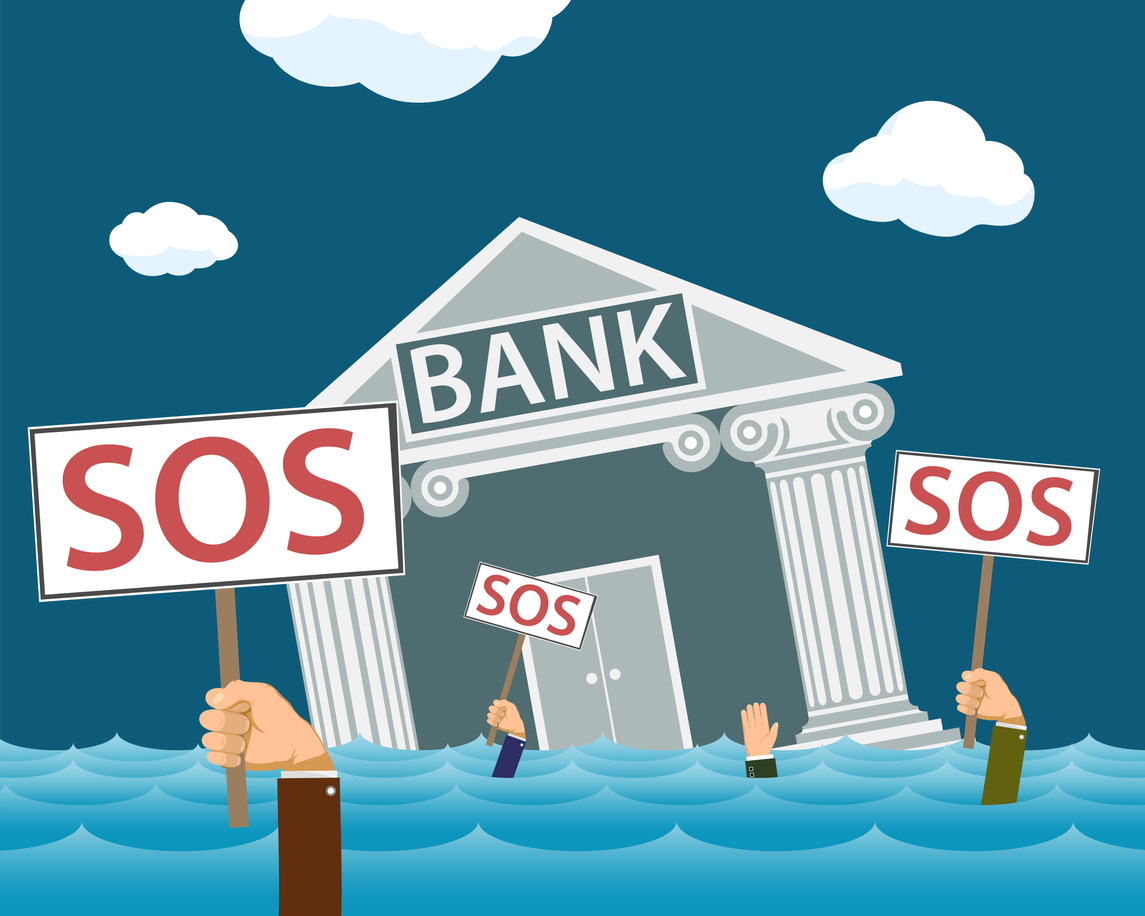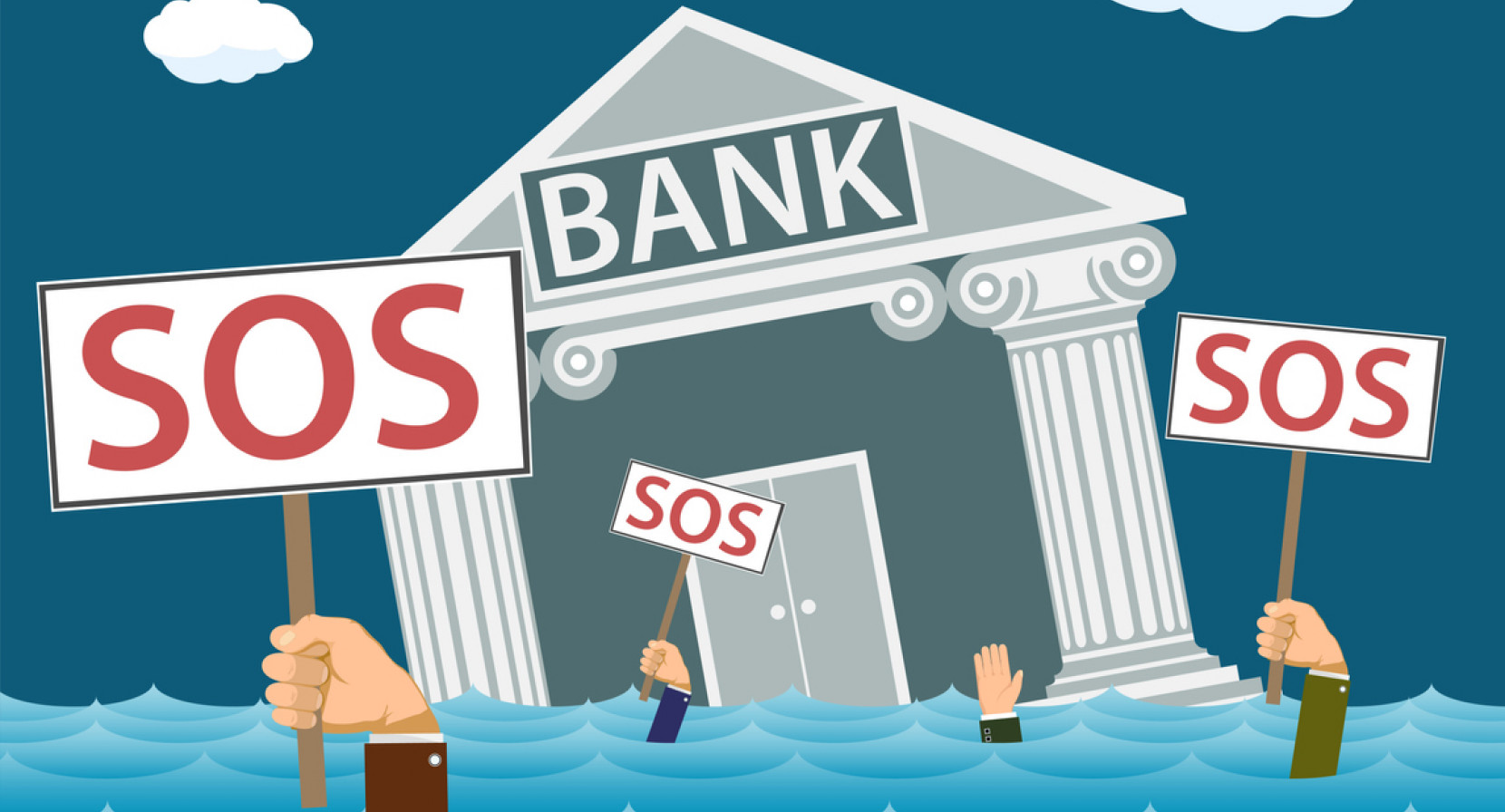We've had a week to digest the rapidly evolving bank story, and what a week it's been! This article is a follow-up to my immediate reaction last Monday to the failure of Silicon Valley Bank (SVB) over the weekend. If you haven't read that yet, it will probably help as I'm going to jump off largely from that point.
Let's recap the major events so far. In the U.S., we've had three regional banks (SVB, Signature Bank, and Silvergate) collapse. These three are easy to mentally dismiss, as their unusually heavy exposure to crypto banking and tech startups make them somewhat unusual. Less easy to gloss over is First Republic, which required a $30 billion infusion of capital from 11 other major banks last week — after the regulator's emergency BTFP (bank term funding program) had been put in place. Over $150 billion was borrowed by banks last week, but First Republic's situation demonstrates pretty clearly that issues remain.
This weekend, the drama picked up overseas, as Credit Suisse was taken over by UBS last night. This came just days after the Swiss national bank had extended Credit Suisse a $54 billion lifeline, yet the bank's investors and customers failed to be reassured. This $3.25 billion acquisition was orchestrated by regulators, presumably with significant assurances to UBS.
To be fair, a decade of negative interest rates has left the European (and Japanese) banking sector an absolute mess, and Credit Suisse has seemingly been in some stage of failing for quite literally as long as I can remember (back to the financial crisis in 2008 at least). But while CS's specific issues may be somewhat unique, and the broader international banking scene a mess due to the abomination of negative interest rates, this is still one of the 30 globally systemically important banks (G-SIBs) that I mentioned last Monday. It's a big deal.
Blame the money market funds
Regulators were successful in quelling the immediate "bank run" panic a week ago with the BTFP, but the underlying problems are much tougher to resolve. That's primarily because they stem directly from the underlying structure of banks themselves and their traditional business model. But it's also because inflation has forced the Fed's hand to raise interest rates. And as we've said repeatedly over the last year, that rate-hike process typically ends with them going too far and breaking something. We're watching that happen in real-time.
You've probably heard that sharks have to keep swimming to stay alive. Modern fractional-reserve banking is a lot like that — a growing economy and modestly higher inflation help the banking system work smoothly, while a shrinking economy and deflation are significant challenges. Fractional-reserve banking is built on the idea that most deposits are loaned out at any given time. In other words, the money you have deposited in the bank isn't sitting in the bank. It's out there in the economy in the form of personal and business mortgages, loans, and so forth. Remember, even when a bank takes deposits and buys Treasury Bills, they are lending that money to the government. It may be the safest and most liquid loan in the world, but it's still a loan.
This is the structural dynamic that makes banks vulnerable to the type of bank run panic that hit SVB and threatened to spread last week before the BTFP soothed depositor nerves. When the music slows and people want their money back, the banks don't have it sitting around.
The business model dynamic is that banks "borrow short and lend long." In its simplest form, this means taking in deposits and lending short-term and high-quality, as in buying Treasury Bills. They take on more risk by buying mortgage-backed securities or lending directly to businesses, but wherever they land on the spectrum, you can see the inherent danger — if depositors suddenly want their money back, the bank is in a pickle because they don't have it all. Most of it is lent out at any given point in time.
While SVB and the other troubled banks have had specific issues (crypto, tech startups), the real problem is that every bank faces this same underlying problem to at least some degree. And that problem has become pronounced as a result of the Fed's rapid interest-rate hikes.
As I noted last week, the groundwork for this crisis was laid in 2021, when the massive stimulus was more than citizens required. As a result, much of that excess wound up in the banking system as extra deposits, which the banks had to do something with. This seemed okay, since someone needed to buy all the new Treasury debt the government was issuing to pay for the stimulus! Banks were natural buyers of that safe, relatively short-term debt.
But once inflation proved to not be "transitory" and the Fed jacked interest rates up by nearly 5 percentage points in the span of the last year, the system's weakness was exposed. As an SMI reader, you probably long ago shifted your savings (emergency fund as well as brokerage cash) to a money market fund (MMF) or other "cash" vehicle that was paying a substantially higher yield than your local bank offered. Guess what? You helped break the banking system.
I say that tongue-firmly-in-cheek, because it's one of the most obvious things for savers to do, and there's absolutely nothing wrong with taking that action. Banks counted on not having many people like you out there, and they kept the rates they paid on deposits well below those of MMFs and Treasury Bills/Bonds. But the higher these rates rose and the longer they persisted, the more people noticed and started moving money out of their local bank accounts. While SMI readers were doing this a year ago, many people have just started doing so recently.
This simple exit of deposits is the true trigger of this recent bank crisis. The banks own "safe" stuff to back these deposits — Treasuries and mortgage-backed securities. But even these "safe" bonds have taken a haircut over the 18 months as rates have risen so sharply. When banks have to sell these investments to pay depositors as their money leaves the bank, they do so at a loss, and suddenly their balance sheet is unbalanced. This is the issue the BTFP was set up to address....
An unwelcome surprise
....Or at least it was supposed to. Unfortunately, it appears this deposit protection isn't as universal as it initially appeared to be. This remarkable exchange between Senator James Lankford of Oklahoma and Treasury Secretary Janet Yellen drives home the point that only those banks the Treasury and regulators deem "systemically important" will get the enhanced depositor protection. Take five minutes and watch this if you haven't already seen it.
Now, to be crystal clear, individuals and businesses with less than $250,000 in their bank accounts still have very little to fear, as normal FDIC has always covered deposits up to that amount. The problem is that any business of decent size needs substantially more liquidity than $250k just to meet monthly payroll. These businesses spent the last week yanking their money out of regional banks and pouring it into the big SIB banks. As I noted last week, this concentration of the banking system into just the largest banks is a horrible development, but businesses simply can't afford to take the risk of leaving more than $250k exposed at the non-SIB banks.
The end, or just the beginning?
I'm not going to pretend to know exactly how this story ends. Some analysts are pointing to the huge increase in the Fed's balance sheet last week — which appeared to roughly reverse one-third to one-half of the Quantitative Tightening the Fed has accomplished over the past year — as evidence that new QE has been unleashed. The combination of dramatic reductions in interest rates and this potential QE spark gave tech stocks a boost last week as people reflexively reached for the 2010s QE playbook.
But these are loans, not gifts (at least at this point). Banks have to pay this money back. They are being squeezed, big time, by the need to pay their depositors higher yields at the same time that they need every drop of capital available to pay out customers who are leaving for Treasuries and MMFs (or moving to larger SIB banks). It seems inevitable to me that this ends in a credit contraction, not expansion (as the previous QE programs led to). Time will tell, but I'm not at all convinced that this is 1) a good thing for risk assets, or 2) the end of this bank crisis story.
At the risk of sounding too doomy, the regional banks have another shoe looming — commercial real estate. Commercial real estate makes up roughly 25% of all bank loans, and smaller (<$250B) banks have roughly 80% of the total commercial real estate exposure. We've seen large defaults in big cities like NY, LA, etc., but the problem is the same everywhere — people aren't returning to the office the same way they did pre-COVID, and as a result, there are a lot of office buildings that don't make economic sense anymore. As those leases expire, yikes. Back-to-you, Mr. Banker, here are the keys.
The banks need lower interest rates. The Fed doesn't want to lower them with inflation still at 6%. Eventually the Fed will cut them, but I suspect that won't happen until we're farther down the recessionary path. As in 2008, the market tends to celebrate every time a supposed "fix" is announced. But until these underlying credit market/banking dynamics shift, more credit surprises are certainly possible, and perhaps even likely. With the Pandora's box of credit risk now wide open, and the recession seemingly looming straight ahead, our conservative investing posture continues to be warranted.









